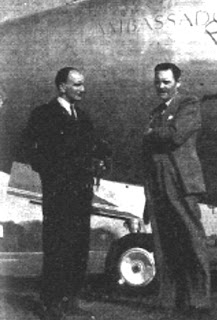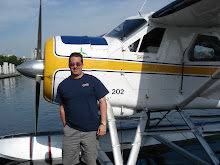

Gerben Sonderman with Prince Bernard of the Netherlands
Sonderman in cockpit of first RNLAF Hunter

Maiden flight of the Fokker S-14 by Gerben Sonderman
Gerben Sonderman was born on December 29th, 1908, at Drachten, Holland, and, having finished high school, he studied at the Academy for Physical Training. Following graduation he
became a teacher at a high school and, after joining the Rotterdam Lloyd Shipping Company, was appointed a physical training instructor. Later he joined the Netherlands Air Force, thereby
achieving a long-standing ambition. In October 1936 he was appointed as a pilot officer in the
Reserve. On January 23rd, 1939, he entered the service of the Fokker company as a test pilot, and tested the D.21, D.23 and G.I fighters, as well as the T.5, T.8-W and T.9 bombers. During the German invasion he fought gallantly, in a G.I, against the Luftwaffe, and during the occupation was an active member of the resistance movement.
After the war, in 1946-47, he was one of the few Dutch pilots to take the E.T.P.S. course in England. In January 1947 he was promoted 1st lieutenant and, in May 1948, captain. Thereafter he became personal pilot to His Royal Highness Prince Bernhard and to the Netherlands Royal Family. He was made a lieutenant-colonel in 1954.
Gerben Sonderman was tragically killed in 1955 in a Fokker S-14 Machtrainer during a flight display in the U.S.A.
 Chris Clarkson with George Errington (left) after flying the prototype Airspeed Ambassador
Chris Clarkson with George Errington (left) after flying the prototype Airspeed Ambassador
 Chris Clarkson ready to test another Canadian built Mosquito
Chris Clarkson ready to test another Canadian built Mosquito






















































